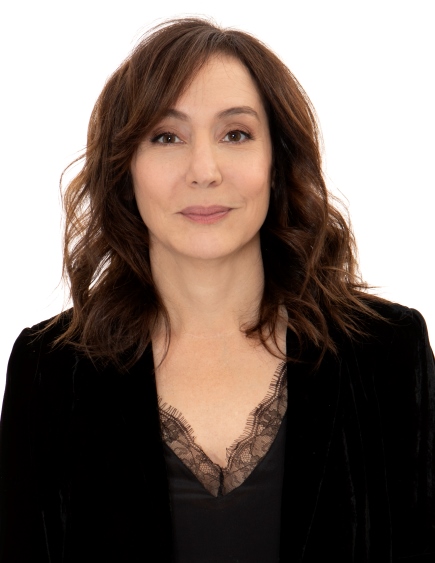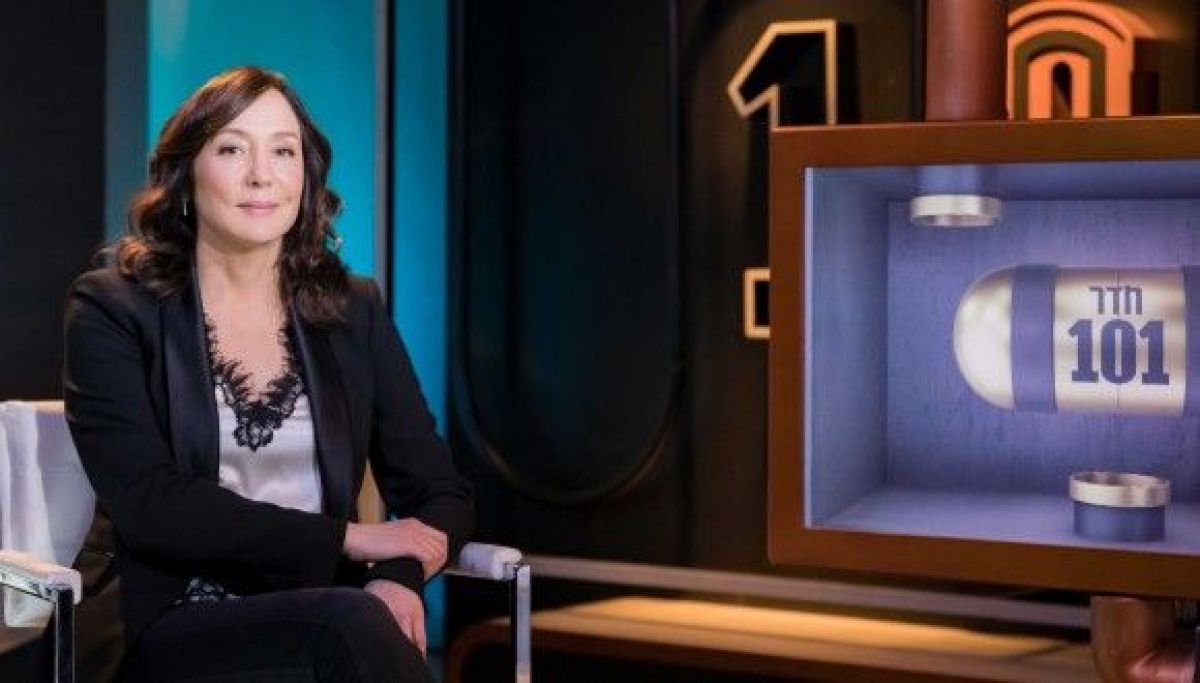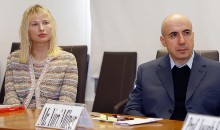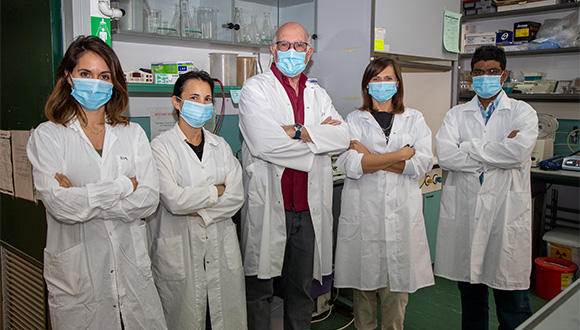How many people in the Kingdom of Judah could read and write? And what does this say about the date of the composition of biblical texts like the Books of Kings? Researchers at Tel Aviv University used state-of-the-art image processing and machine learning technologies and collaborated with senior handwriting examiner to analyze 18 ancient texts from the Tel Arad military post dating back to around 600 BCE. They concluded that they were written by no fewer than 12 authors, a finding suggesting that many of the inhabitants of the kingdom of Judah during that period were able to read and write, with literacy not reserved as an exclusive domain in the hands of a few royal scribes.
Who wrote the books of Deuteronomy, Joshua, Judges, Samuel and Kings?
The special interdisciplinary study was conducted by Dr. Arie Shaus, Ms. Shira Faigenbaum-Golovin, and Dr. Barak Sober of
the Department of Applied Mathematics, Prof. Eli Piasetzky of
the Raymond and Beverly Sackler School of Physics and Astronomy, and Prof. Israel Finkelstein of
the Jacob M. Alkow Department of Archeology and Ancient Near Eastern Civilizations. The forensic handwriting specialist is Ms. Yana Gerber, a senior expert who served for 27 years in the Questioned Documents Laboratory of Israel Police Division of Identification and Forensic Science, and in the police’s International Crime Investigations Unit.
“There is a lively debate among experts as to whether the books of Deuteronomy, Joshua, Judges, Samuel and Kings were compiled in the last days of the kingdom of Judah, or after the destruction of the First Temple by the Babylonians,” explains Dr. Shaus. “One way to try to get to the bottom of this question is to ask when there was the potential for the writing of such complex historical works. For the period following the destruction of the First Temple in 586 BC, there is a very scant archaeological evidence of Hebrew writing in Jerusalem and its surroundings, whereas for the period preceding the destruction of the Temple, an abundance of written documents has been found. But then the question arises – who wrote these documents? Was this a society with widespread literacy, or was there just a handful of literate people?”
To answer this question, the researchers examined the writings found in Tel Arad – ostraca (fragments of pottery vessels containing ink inscriptions) that were discovered at the Tel Arad site in the 1960s. Tel Arad was a small military post on the southern border of the kingdom of Judah; its built-up area was about two dunams and it housed between 20 and 30 soldiers.
“We examined the question of literacy empirically, from different directions of image processing and machine learning,” says Ms. Faigenbaum-Golovin. “Among other things, these areas help us today with the identification, recognition and analysis of handwriting, signatures, and so on. The big challenge was to adapt modern technologies to 2,600-year-old ostraca. With a lot of effort, we were able to produce two algorithms that could compare letters and answer the question of whether two given ostraca were written by two different people.”
Police detective work following biblical texts
In 2016, the researchers published in
Proceedings of the National Academy of Sciences of the United States of America
(PNAS) that algorithmically, and with high statistical probability, 18 texts – the longest of the Tel Arad inscriptions – were written by at least four different authors. Combined with the textual evidence, the researchers concluded that there were in fact at least six different writers. The study aroused great interest around the world.
Now, in an unprecedent move, the Tel Aviv University researchers have decided to compare the algorithmic methods, which have since been refined, to the forensic approach. To this end, Yana Gerber, a retired superintendent and senior questioned document examiner from the Israel Police Division of Identification and Forensic Science, joined the team. After an in-depth examination of the ancient inscriptions, Ms. Gerber found that the 18 texts were written by at least 12 distinct writers with varying degrees of certainty. Gerber examined the original Tel Arad ostraca at the Israel Museum, the Eretz Israel Museum, the Sonia and Marco Nedler Institute of Archaeology of Tel Aviv University, and the Israel Antiquities Authority’s warehouses at Beit Shemesh.
“This study was very exciting, perhaps the most exciting in my professional career,” says Ms. Gerber. “These are ancient Hebrew inscriptions written in ink on shards of pottery, utilizing an alphabet that was previously unfamiliar to me. I studied the characteristics of the writing in order to analyze and compare the inscriptions, while benefitting from the skills and knowledge I acquired during my bachelor’s degree in classical archaeology and ancient Greek at Tel Aviv University. I delved into the microscopic details of these inscriptions written by people from the First Temple period, from routine issues such as orders concerning the movement of soldiers and the supply of wine, oil and flour, through correspondence with neighboring fortresses, to orders that reached the Tel Arad fortress from the high ranks of the Judahite military system. I had the feeling that the time stood still and there was no gap of 2,600 years between the writers of the ostraca and ourselves.”
Combining forces between the human eye and the algorithm
Gerber explains: “Handwriting is made up of unconscious habit patterns. The handwriting identification is based on the principle that these
writing patterns are unique to each person and no two people write exactly alike. It is also assumed that repetitions of the same text or characters by the same writer are not exactly identical and one can define a range of natural handwriting variations specific to each one. Thus, the forensic handwriting analysis aims at tracking features corresponding to specific individuals, and concluding whether a single or rather different authors wrote the given documents. The examination process is divided into three steps: analysis, comparison, and evaluation. The analysis includes a detailed examination of every single inscription, according various features, such as the spacing between letters, their proportions, slant, etc. The comparison is based upon the aforementioned features across various handwritings. In addition, consistent patterns, common for different inscriptions, are identified i.e., the same combinations of letters, words, punctuation, etc. Finally, an evaluation of identicalness or distinctiveness of the writers is made. It should be noted that according to an Israel Supreme Court ruling, a person can be convicted of a crime based on the opinion of a forensic handwriting expert.”
Says Dr. Shaus: “We were in for a big surprise: Yana identified more authors than our algorithms did. It must be understood that currently, our algorithms are of a “cautious” nature – they know how to identify cases in which the texts were written by people with significantly different writing; in other cases they refrain from definite conclusions. Contrastingly, an expert in handwriting analysis knows not only how to spot the differences between writers more accurately, but in some cases may also arrive at the conclusion that several texts were actually written by a single person. Naturally, in terms of consequences, it is very interesting to see who the authors are. Thanks to the findings, we were able to construct an entire flowchart of the correspondence concerning the military fortress – who wrote to whom and regarding what matter”. This reflects the chain of command within the Judahite army.
“For example, in the area of Arad, close to the border between the kingdoms of Judah and Edom, there was a military force whose soldiers are referred to as “Kittiyim” in the inscriptions, most likely Greek mercenaries. Someone, probably their Judahite commander or liaison officer, requested provisions for the Kittiyim unit. He writes to the quartermaster of the fortress in Arad ‘give the Kittiyim flour, bread, wine’ and so on. Now, thanks to the identification of the handwriting, we can say with high probability that there was not only one Judahite commander writing, but at least four different ones. It is conceivable that each time another officer was sent to join the patrol – they took turns.”
Literary education in the Kingdom of Judah
According to the researchers, the findings shed new light on Judahite society on the eve of the destruction of the First Temple – and on the setting of the compilation of biblical texts. “It should be remembered that this was a small outpost, one of a series of outposts on the southern border of the kingdom of Judah,” says Dr. Sober. “Since we found at least 12 different authors out of 18 texts in total, we can conclude that there was a high level of literacy throughout the entire kingdom. The commanding ranks and liaison officers at the outpost, and even the quartermaster Eliashib and his deputy, Nahum, were literate. Someone had to teach them how to read and write, so we must assume the existence of an appropriate educational system in Judah at the end of the First Temple period. This, of course, does not mean that there was almost universal literacy as there is today, but it seems that significant portions of the residents of the kingdom of Judah were literate. This is important to the discussion on the composition of biblical texts. If there were only two or three people in the whole kingdom who could read and write, then it is unlikely that complex texts would have been composed.”
“Whoever wrote the biblical works did not do so for us, so that we could read them after 2,600 years, they did so in order to promote the ideological messages of the time,” Prof. Finkelstein says. “There are different opinions regarding the date of the composition of biblical texts. Some scholars suggest that many of the historical texts in the Bible – from Joshua to II Kings – were written at the end of the 7th century BC, that is, very close to the period of the Arad ostraca. It is important to ask who these texts were written for. According to one view, there were events in which the few people who could read and write stood before the illiterate public and read texts out to them. A high literacy rate in Judah puts things into a different light.”
Prof. Finkelstein adds: “Until now, the discussion of literacy in the kingdom of Judah has been based on circular arguments, that is, on what is written within the Bible itself, for example on scribes in the kingdom. We have shifted the discussion to an empirical perspective. If in a remote place like Tel Arad there was, over a short period of time, a minimum of 12 authors of 18 inscriptions, out of the population of Judah which is estimated to have been no more than 120,000 people, it means that literacy was not the exclusive domain of a handful of royal scribes in Jerusalem. The quartermaster from the Tel Arad outpost also had the ability to read and appreciate them.”
Featured image: Hebrew ostraca from Arad
 Photo: Adi Orni
In addition to her radio show and Back of the Nation, she hosts the Israeli version of the BBC TV program Room 101, in which she interviews Israeli personalities about their biggest fears or pet peeves. She also lectures about humor and writes newspaper columns. She recently produced a documentary about the anti-aging industry.
Galili is one of several well-known female comedians in Israel, but women are still the minority in the field. An avowed feminist, she says that she insists on having at least one female writer on the Back of the Nation team. What separates her from her male counterparts, she says, are the jokes she doesn’t make. She will never make a joke about a woman being old or ugly or fat, she says. ”It’s not in my agenda.”
Photo: Adi Orni
In addition to her radio show and Back of the Nation, she hosts the Israeli version of the BBC TV program Room 101, in which she interviews Israeli personalities about their biggest fears or pet peeves. She also lectures about humor and writes newspaper columns. She recently produced a documentary about the anti-aging industry.
Galili is one of several well-known female comedians in Israel, but women are still the minority in the field. An avowed feminist, she says that she insists on having at least one female writer on the Back of the Nation team. What separates her from her male counterparts, she says, are the jokes she doesn’t make. She will never make a joke about a woman being old or ugly or fat, she says. ”It’s not in my agenda.”




 We must also recognize that science is global and universal. It is one of the few fabrics that connects the world and brings us all together. Especially in the world now, when people are feeling separated from each other due to the COVID-19 crisis, I think science is one of those elements that brings us all together.
Photo (left): The Milners at a TAU event in honor of the 70 for 70 Initiative. Credit: Yehonatan Zur.
What lies behind your idea that scientists should be compensated like celebrities?
In today’s world, recognition is based on either celebrity status or financial wealth. Few people are celebrated for their intellectual achievements. What the Breakthrough Prize is trying to achieve is to bring about a more balanced world whereby intellectual achievement will be celebrated at least on par with other achievements, and where scientists will receive the recognition they deserve. We thought that celebrating the most brilliant minds could maybe inspire kids interested in science to pursue an academic career.
What advice would you give to young Israeli scientists who dream of changing the world?
Although I tried for a number of years to do this myself, I wasn’t too successful. My advice would be contrary to my own experience – try to focus on fundamental science. If you put your name on a building, that building will not survive over hundreds of years. But if you make a scientific discovery, this is something that cannot ever be undone. In a thousand years from now, Einstein will still be remembered for his theory of general relativity, while many other great men will be forgotten. So if you really want to leave a lasting legacy for our civilization, the only sure way is through fundamental science and making discoveries.
I envy people who choose basic science as their occupation. Not being able to make a contribution myself, I am trying to focus our foundation on supporting those who can.
Tell us about your connection to Israel and making Aliyah.
I became an Israeli citizen over 20 years ago. This was really an important calling for me because, growing up in the Soviet Union, I had limited ability to connect with my heritage and ancestors in a meaningful way. As soon as it was possible, I decided to become an Israeli citizen and, to the extent possible, to contribute to the State of Israel.
Featured image: Yuri and Julia Milner. Courtesy of Yuri and Julia Milner.
We must also recognize that science is global and universal. It is one of the few fabrics that connects the world and brings us all together. Especially in the world now, when people are feeling separated from each other due to the COVID-19 crisis, I think science is one of those elements that brings us all together.
Photo (left): The Milners at a TAU event in honor of the 70 for 70 Initiative. Credit: Yehonatan Zur.
What lies behind your idea that scientists should be compensated like celebrities?
In today’s world, recognition is based on either celebrity status or financial wealth. Few people are celebrated for their intellectual achievements. What the Breakthrough Prize is trying to achieve is to bring about a more balanced world whereby intellectual achievement will be celebrated at least on par with other achievements, and where scientists will receive the recognition they deserve. We thought that celebrating the most brilliant minds could maybe inspire kids interested in science to pursue an academic career.
What advice would you give to young Israeli scientists who dream of changing the world?
Although I tried for a number of years to do this myself, I wasn’t too successful. My advice would be contrary to my own experience – try to focus on fundamental science. If you put your name on a building, that building will not survive over hundreds of years. But if you make a scientific discovery, this is something that cannot ever be undone. In a thousand years from now, Einstein will still be remembered for his theory of general relativity, while many other great men will be forgotten. So if you really want to leave a lasting legacy for our civilization, the only sure way is through fundamental science and making discoveries.
I envy people who choose basic science as their occupation. Not being able to make a contribution myself, I am trying to focus our foundation on supporting those who can.
Tell us about your connection to Israel and making Aliyah.
I became an Israeli citizen over 20 years ago. This was really an important calling for me because, growing up in the Soviet Union, I had limited ability to connect with my heritage and ancestors in a meaningful way. As soon as it was possible, I decided to become an Israeli citizen and, to the extent possible, to contribute to the State of Israel.
Featured image: Yuri and Julia Milner. Courtesy of Yuri and Julia Milner.






 Prof. Gershoni’s Lab team (Photographer: Moshe Bedarshi)
This study is anchored in more than 30 years of research on the interaction of RNA viruses with their receptors and the immune response against them, noted Professor Tal Pupko, Head of the Shmunis School at TAU. “The 3M grant will dramatically accelerate the pace of research for overcoming COVID-19,” said Professor Pupko, adding that Tel Aviv University was particularly proud to be included in this important global initiative by 3M.
“Science is at the heart of 3M and we are committed to advancing the rapid study of this virus as part of our continued effort to combat the COVID-19 pandemic,” said Isabelle Zadikov-Carp, 3M Israel Country Leader. “It’s important that 3M holds true to its core values by supporting our communities and improving lives. We hope that the grant to TAU will facilitate the development of an effective vaccine and we will be keenly following the progress and outcomes of Professor Gershoni’s research with interest.”
Featured image: Professor Jonathan Gershoni (Photographer: Moshe Bedarshi)
Prof. Gershoni’s Lab team (Photographer: Moshe Bedarshi)
This study is anchored in more than 30 years of research on the interaction of RNA viruses with their receptors and the immune response against them, noted Professor Tal Pupko, Head of the Shmunis School at TAU. “The 3M grant will dramatically accelerate the pace of research for overcoming COVID-19,” said Professor Pupko, adding that Tel Aviv University was particularly proud to be included in this important global initiative by 3M.
“Science is at the heart of 3M and we are committed to advancing the rapid study of this virus as part of our continued effort to combat the COVID-19 pandemic,” said Isabelle Zadikov-Carp, 3M Israel Country Leader. “It’s important that 3M holds true to its core values by supporting our communities and improving lives. We hope that the grant to TAU will facilitate the development of an effective vaccine and we will be keenly following the progress and outcomes of Professor Gershoni’s research with interest.”
Featured image: Professor Jonathan Gershoni (Photographer: Moshe Bedarshi)
